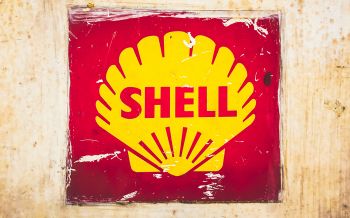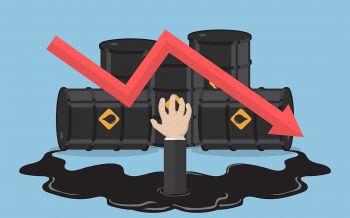ExxonMobil today posted its first quarterly loss in decades in jaw-dropping financial results that underscore just how far the once-almighty US energy titan has fallen out of fortune, and out of favour with Wall Street. The dismal results mark a new low for Exxon, and came in the same week that Royal Dutch Shell reluctantly cut its dividend for the first time since the second world war.
The tide was already going out on Big Oil names long before Covid-19 roiled energy markets. Exxon’s revenues, EBITDA, operating income and free cash flow have all shrunk over the past decade. XOM shares have fallen 35% since April 2010, while the S&P 500 has grown 134% over the same period.
In that period, Exxon – by its own admission – paid too much for US gas producer XTO Energy, invested over USD 15 billion in tar sands and then wrote off over 30 billion barrels of reserves. Also, a lucrative Russian Arctic exploration deal was thwarted by US sanctions.
Speaking at Exxon’s 2020 investor day in New York in March, CEO Darren Woods became palpably riled by incessant questioning from investors around the credibility of the company’s strategy to create long-term value.
“We will be competitive with the S&P 500,” he insisted, even as Exxon was pumping the brakes on its flagship Permian shale projects. This was on 5 March, just before Brent crude spectacularly collapsed 25% in a single day, followed by further steep declines to multi-decade lows.
Woods’ pledge seemed incredible even before events overtook the market. Exxon’s return on average capital employed (ROACE) has crashed from 23.4% in 2009 to 6.5% last year, while production has remained essentially flat at just shy of 4 million barrels/d.
Diving headlong into the Permian – which was arguably already past its peak – never seemed likely to reverse that trend, and US shale investment was the first thing to be trimmed as soon as the market woke up to the sheer extent of the coronavirus-fuelled demand collapse.
Today, Woods was equally defiant. “[W]e are not losing sight of the long-term fundamentals that drive our business. Economic activity will return, and populations and standards of living will increase, which will in turn drive demand for our products and a recovery of the industry,” he said, describing the pandemic crisis as a ‘blip’.
He is not entirely wrong. There will be a recovery at some point. Demand will spring back, but the real question is when, by how much, and for how long.
Even before peak oil demand hits in the 2030s, it far from clear how oil majors will balance the competing priorities of capital investment, balance sheet strength and shareholder payouts during a commodity downturn that is likely to be the deepest and longest in living memory.
Some of the structural changes arising from the Covid-19 pandemic could support oil demand, for example enduringly lower gasoline prices weakening the push towards electric vehicles. But many others will work against it: think home working, virtual meetings and decimated tourism and airline industries eroding fuel demand. Record US unemployment will not disappear as soon as lockdowns are lifted.
And then there is the small question of climate change. Exxon has steadfastly resisted calls to adapt to the rapidly accelerating decarbonisation agenda, but the trend towards tightening emissions regulations has not gone away. The current crisis will only add urgency to investors scrambling to re-evaluate the risk profile of hydrocarbon assets. ExxonMobil is yet to come up with a credible strategy to navigate this panorama.
‘Crisis of uncertainty’
The end is not nigh, and Exxon still has plenty of wiggle-room. Credit ratings agency S&P Global rates XOM at AA following a recent downgrade, which was prompted by Exxon’s strategy to borrow more to bridge the growing gap between free cashflow and shareholder payouts.
The AA rating is third from the top and still “high grade, investment grade”. XOM would need to fall eight S&P notches to reach “junk” (below BBB-). Exxon for decades had the highest rating with S&P, AAA. Many argued it was an inefficient use of capital to rely so heavily on equity and not use debt, as this constrains growth.
Exxon’s debt spiked to USD 59.6 billion at the end of March 2020, a rise of USD 13 billion in just three months. Those who argue for more debt might think that the AA rating is still too high and falling another few notches to between A- and A+ is perfectly acceptable to tide the company over.
Speaking in today’s Q1’20 earnings call, Woods acerbically commented that Exxon does not look to Shell for guidance on what to do with its own dividend. Read: we will borrow as necessary, and credit ratings be damned.
Shell is already one notch lower than Exxon, at AA-, and the mood music coming from CEO Ben van Beurden is markedly gloomier than Woods’ bullishness. The Shell boss coined the term “crisis of uncertainty” to describe the simultaneous challenges of crashing oil prices, demand, refining margins, asset “viability” and logistical headaches arising from the pandemic.
Van Beurden’s pessimistic tone drew scorn from some commentators. Woods’ optimism was slated by others as being detached from reality.
While they have adopted sharply divergent rhetoric, the CEOs now share the unenviable accolade of having presided over historic and humbling events for their respective corporations that further tarnish the perception of Big Oil stocks as haven investments.
And all this before the Covid-19 nadir months of April and May manifest themselves on balance sheets. The second quarter results season promises to be even more eventful than the first. - SK
Sebastian Kennedy
Editor – Gas Matters Today
The views contained in this Editorial are solely those of the editor and do not necessarily reflect those of Gas Strategies.
Photo: ExxonMobil CEO Darren Woods and Shell CEO Ben van Beurden (credit ExxonMobil/Shell, montage Gas Matters Today)
Subscription Benefits
Our three titles – LNG Business Review, Gas Matters and Gas Matters Today – tackle the biggest questions on global developments and major industry trends through a mixture of news, profiles and analysis.
LNG Business Review
LNG Business Review seeks to discover new truths about today’s LNG industry. It strives to widen market players’ scope of reference by actively engaging with events, offering new perspectives while challenging existing ones, and never shying away from being a platform for debate.
Gas Matters
Gas Matters digs deep into the stories of today, keeping the challenges of tomorrow in its sights. Weekly features and interviews, informed by unrivalled in-house expertise, offer a fresh perspective on events as well as thoughtful, intelligent analysis that dares to challenge the status quo.
Gas Matters Today
Gas Matters Today cuts through the bluster of online news and views to offer trustworthy, informed perspectives on major events shaping the gas and LNG industries. This daily news service provides unparalleled insight by drawing on the collective knowledge of in-house reporters, specialist contributors and extensive archive to go beyond the headlines, making it essential reading for gas industry professionals.





